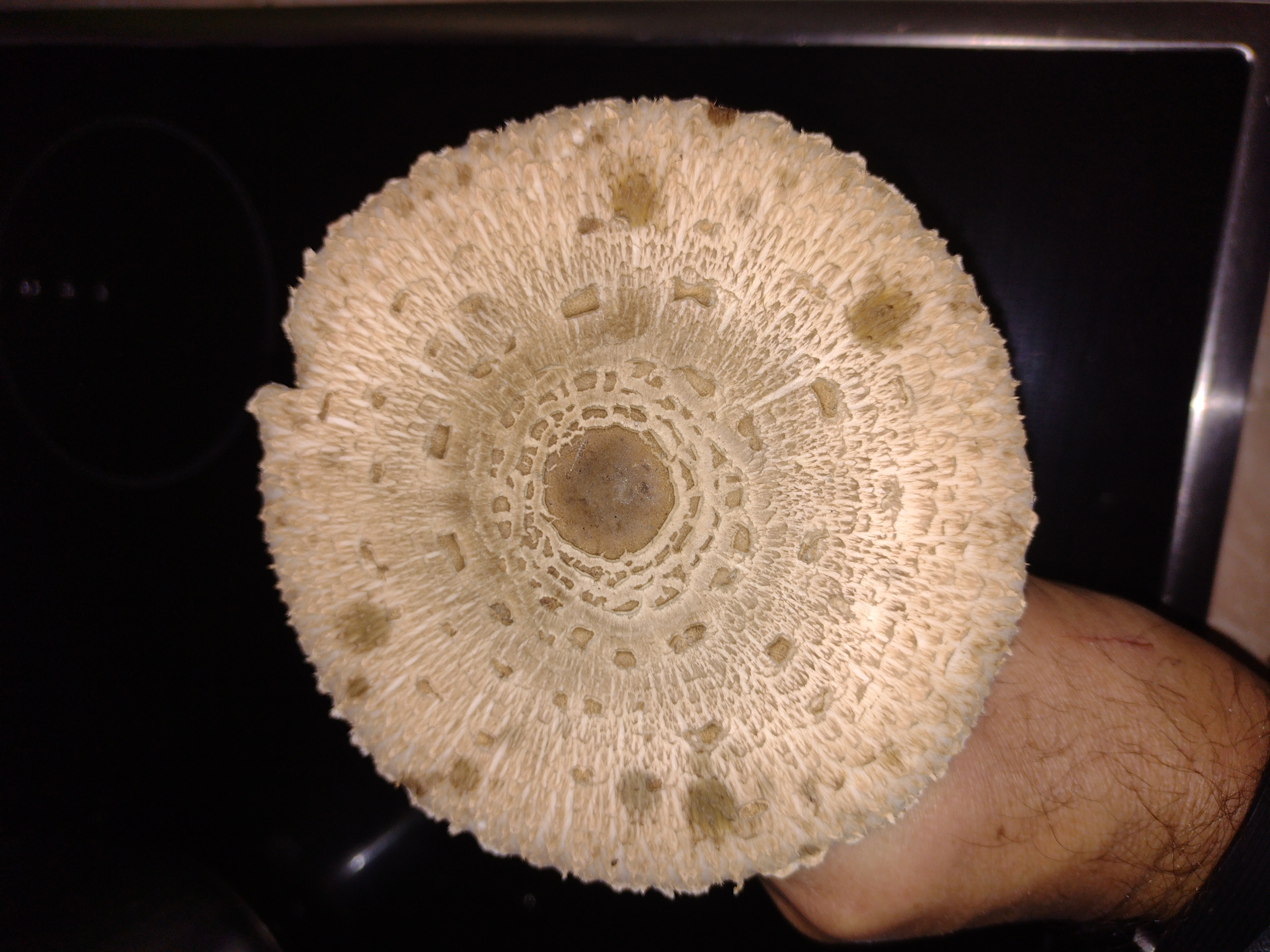Parasol Mushroom (Tentative)
Macrolepiota procera
Large Scaly Mushroom: High Risk of Confusion with Highly Toxic Lookalikes

1 / 2
All Images (2)
Key Features
- Large cap with concentric
- shaggy
- brown scales
- Dark
- smooth central umbo
- Free
- crowded
- white gills
- Tall
- slender stem with a prominent
- movable ring
- Bulbous
- non-volvate stem base
- Stem surface often mottled or slightly scaly
Color:
Pale beige/tan cap scales, white gills, brown stem
Smell:
Unknown
Growth Pattern:
Cannot assess
Environment:
Soil
Habitat & Distribution
Habitat:
Grassy areas, edges of woods, disturbed ground
Distribution:
Widespread (Cosmopolitan)
Seasonality:
Summer to Autumn
Critical Features for Confirmation
- Spore print color, critical for distinguishing M. procera from C. molybdites, is unknown
- Context staining reaction is unknown
Economic Value
Market Demand:
Moderate - Highly sought after in some regions when safely identified
Price Range:
N/A (Wild harvested only)
Commercial Use:
None (Due to high risk of misidentification with toxic species)
Similar Species
Green-spored Lepiota
Chlorophyllum molybdites
Key Differences:
- Spore print is green (M. procera is white)
- Context often stains reddish-brown when cut or bruised
Shaggy Parasol
Chlorophyllum rhacodes
Key Differences:
- Flesh bruises rapidly red or reddish-brown when cut
- Scales often larger and darker
Recommended Action
Do not consume. Requires spore print analysis and context observation (staining) for safe identification.